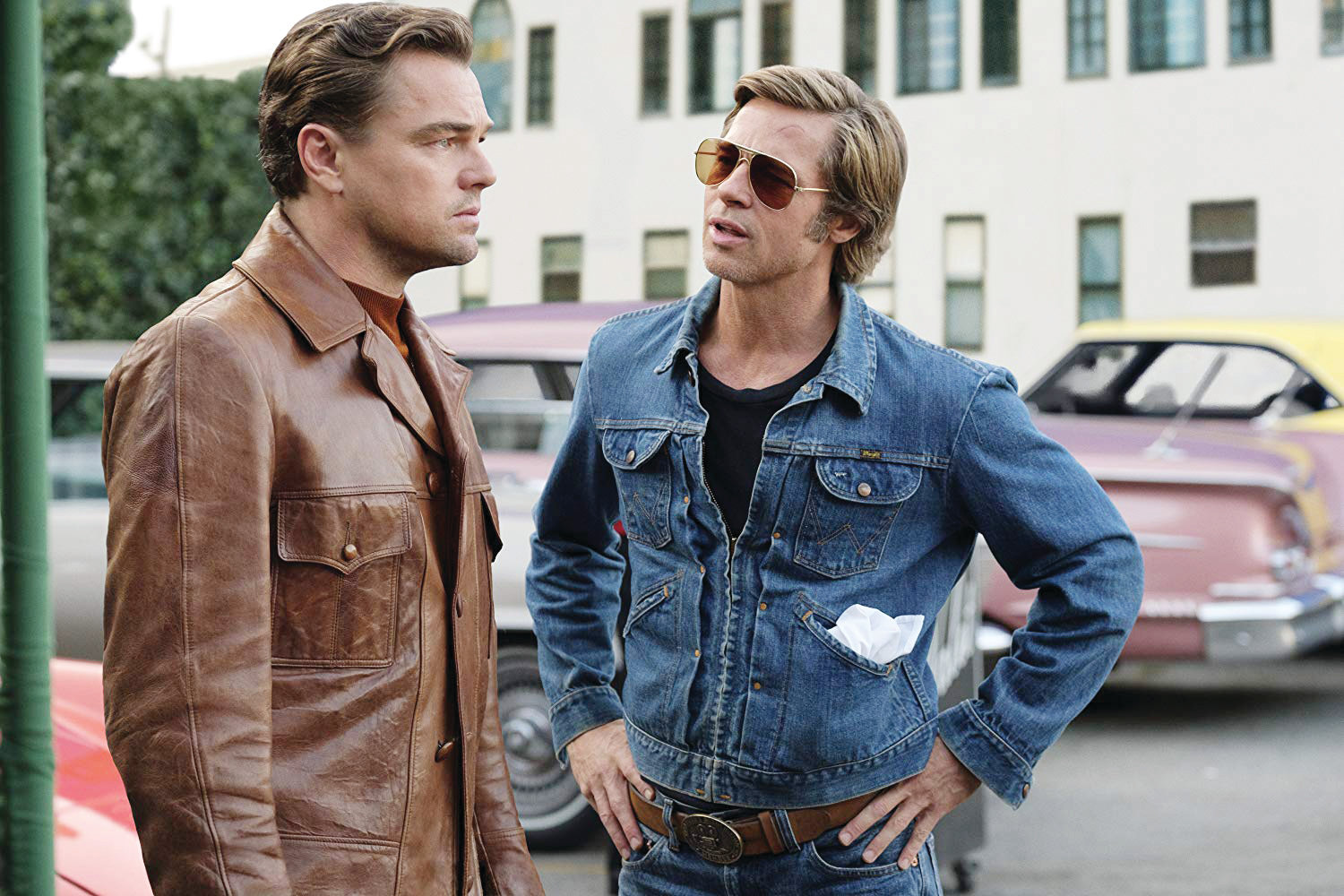
It seems like Quentin Tarantino enjoys conceiving fake old entertainment as much as real new entertainment. Pastiche fills his films, from the fictional LA 70s radio station heard throughout “Reservoir Dogs” to the “Fox Force Five” TV pilot described by Uma Thurman in “Pulp Fiction.” There’s another Austin, Texas-based radio show and Tennessee-based movie shoot in “Death Proof,” and faux Nazi propaganda films in “Inglorious Basterds.”
From that perspective, “Once Upon a Time in Hollywood” is Tarantino’s cinematic playground, set in the 1969 Los Angeles of his childhood, a neon-lit world of both fulfilled and broken dreams. It’s dingy and grimy, where even the dirty movies have grand premieres. Homeless hippies fill the streets and dive into dumpsters in search of food, while the Hollywood elite and their hanger-ons retreat to the hills to live. The setting is both intoxicating and deflating, a confluence and dichotomy that tragically produced the likes of Charles Manson and his cult-like “family” in the late 1960s.
The film opens in early ‘69 with fictitious actor Rick Dalton (Leonardo DiCaprio) at a professional crossroads. Years before, Dalton starred in a successful Western TV show named “Bounty Law,” but he left it to pursue an ill-fated movie career. Now, Dalton bounces from role to role typecast as the “heavy,” a known but fading actor who’s the foil to the younger star in order to propel the star’s career. An agent (Al Pacino) suggests that Dalton consider resuscitating his career with spaghetti westerners in Italy, but to Dalton that’s waving the white flag surrendering his Hollywood ambitions.
Dalton’s longtime stuntman Cliff Booth (Brad Pitt) is also his best friend, manservant, drinking buddy, and counselor. Booth is avuncular and devoted to his BFF, running middling errands for Dalton and driving him everywhere since Dalton lost his driver’s license for driving drunk. But there’s a dark cloud behind Booth’s baby blues, beyond just the whispers about how his wife died years ago. Booth always seems like he’s straddling the line between kind and crazy, equally poised to help out an old friend or punch someone out.
Dalton lives in the cul-de-sac on Cielo Drive (yep, that Cielo Drive), next door and just below the hilltop rental home of director Roman Polanski and his wife, Sharon Tate (Margot Robbie). Dalton pines to one day climb that hill, too, literally and metaphorically. Meanwhile, Tate seemingly occupies another storyline, where the effervescent budding actress parties at the Playboy mansion, picks up and hugs hitchhikers, visits a bookstore to buy her husband a copy of “Tess of the d’Urbervilles,” and then surreptitiously takes in a showing of “The Wrecking Crew,” the new Matt Helm picture in which she co-stars with Dean Martin. Bathed in the theater’s incandescent glow, Tate giddily enjoys seeing herself on the silver screen and hearing the audience’s positive feedback to her jokes and action scenes. It’s a portrait of youthful innocence, a stark contrast to the murderers who, in real life, would later snuff out the life of Tate and her unborn child.
Tarantino seemingly sets the stage for a clash along the class divide. On one side are the Hollywood privileged, celebrating or fretting about their otherwise successful careers while society changes beyond their gilted gates. On the other end are Hollywood’s discarded refuse, embodied by Manson (who barely appears in the film) and his mostly-female family, who came to California with their own hopes but are relegated to squatting at a derelict movie ranch (metaphor alert!) while fueled by a hatred of the haves. A collision seems inevitable.
Beyond the foot fetish that again crops up in “Once Upon a Time in Hollywood,” the common theme running throughout Tarantino’s oeuvre is the virtue of retribution, more specifically the celebration of good people standing up to bad people. It’s why Bruce Willis came back to kill Zed and Maynard instead of running away in “Pulp Fiction.” It’s the core tenet in “Kill Bill.” Tarantino’s more recent films have seen women literally pummeling their abusers, Jews killing Hitler, and a black man blowing up a slave plantation. In speaking about his disdain for biopics, Tarantino says the one exception he might make is a movie about the violent black abolitionist John Brown.
If you watch “Once Upon a Time in Hollywood” expecting to see Tarantino’s recreation of the Manson murders with Tinseltown as the mere backdrop, think again. The film rewrites history through the Tarantino prism. Like many of his recent scripts, this is a work of fan fiction, set in a milieu that’s part fact, part fantasy. Tarantino demythologizes the Manson family — as he did with Nazis in “Inglorious Basterds” and slaveholders in “Django Unchained” — depicting them as hapless misfits wallowing in squalor. There’s little regard for the cultural and societal origins for their existence. To Tarantino, they’re depraved parasites and a mindless cult unworthy of cult status. And, yes, there’s comeuppance in the works.
The film’s fulcrum is the relationship between Dalton and Booth, and how friendships can originate, evolve, and persist for reasons that aren’t always discernible or tangible. But as the film’s title portends, “Once Upon a Time in Hollywood” is also a fairy tale where the party never ends, the pretend heroes become actual ones, and everyone lives happily ever after.